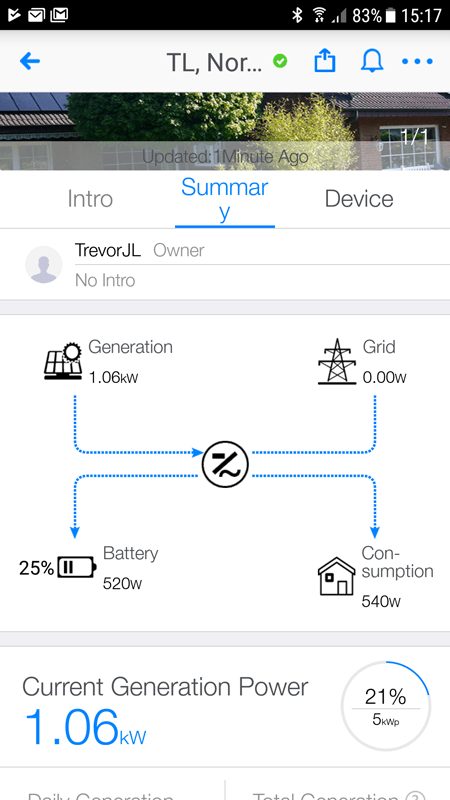I have had a PowerBanx home battery installed as I got fed up with paying for electricity, particularly as prices keep going up.
How it works is very simple: it charges up from our solar panels during the day and then empties during the evening to power the house. The battery is big enough that if we’re not too wasteful it can take us right through the evening and night-time until the solar starts again the next day. Result: no electricity bill, at least outside the darker winter months.

The whole process is automatic – the PowerBanx just sits in the cupboard under the stairs doing its thing. If you want to you can monitor it on your phone or online using SolarMAN software.

However, there’s very little to set on it, it’s pretty much ‘fire and forget’. I actually had it installed about a month ago so thought it was about time I took notice of exactly what it was doing and how well it was working – hence this blog. Yesterday was the first of the month so that seemed like a good day to start (‘Day 1’).
At 8am I took photos of our electricity meter as a baseline. We have an Economy 7 meter so it has a reading for daytime usage – currently showing 63260 kWh – and for night-time usage – 24848 kWh.

The morning started clear with pretty good sunshine, increasing steadily from 6am to 11.30 and filling up the battery from about 8am (once there was more electricity being produced than the house was using). I’m currently working at home so the main consumption is from my work laptop and screens, and a second desktop PC running 24/7 trading Bitcoin.
From 1130 on there was intermittent cloud so the solar generation kept jumping up and down; the battery filled more slowly but nonetheless was full by about 2pm. We can see this happening via charts in the SolarMAN Pro software:

Note that Current Power is how much electricity is being generated by the solar panels in kW. SOC is ‘state of charge’ of the battery. It goes from 0% to 100% (full) but PowerBanx always keeps a reserve of 20% in the batteries to prolong their life so 20% should be read as ’empty’.
At 2.40 I could see that the battery was full and there was spare solar going out to the grid so I put on the washing machine to make use of the free electricity I couldn’t use later – however, there was so much spare solar that it had no impact on the battery and can’t be seen in the chart (maybe I should consider a bigger battery).
Looking further right in the chart we can see that the sunshine tapered off from about 5.30 and the battery was starting to empty to keep the house running without using metered electricity. However we can see clearly that we hadn’t even half emptied the battery by the time we went to bed at midnight.
Naturally the next morning I couldn’t resist checking the electricity meter – here it is at 8am:

The meter readings are unchanged after 24 hours. Also, as we can see from the chart, we go into the second day with the battery more than half full.
So there you have it – we have successfully got through powering our home for 24 hours without having to pay for electricity thanks to the PowerBanx home battery.
I’ll keep monitoring and blogging about it so we can see how well it works long term.
Update: Living Without an Electricity Bill – Day 2
Get The Right PowerBanx For Your Home
If you would like to know more about the PowerBanx range of home battery systems, and get a free instant quote, please complete our online form:




